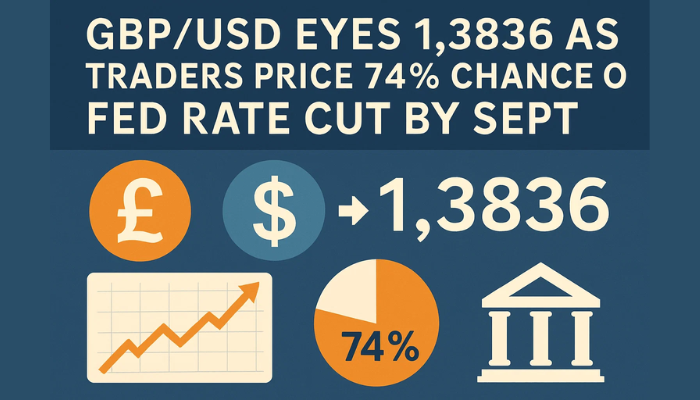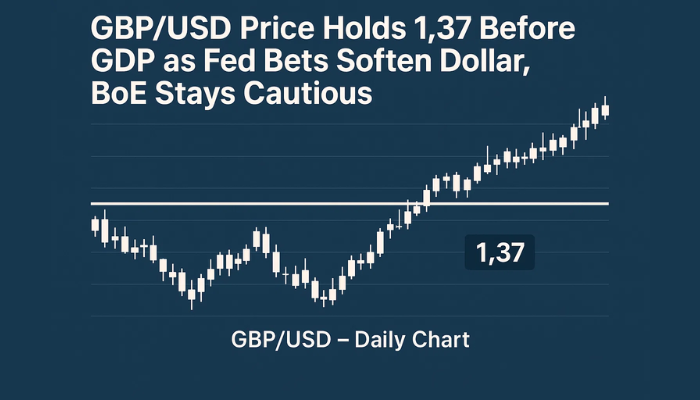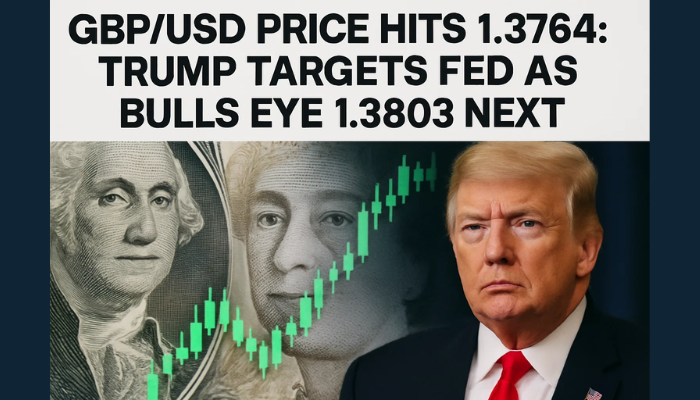GBP/USD – Forecast Summary
| GBP/USD Forecast: H2 2023
Price: $1.30 – $1.35 Price drivers: Deteriorating sentiment, Inflation, Central banks, covid-19 |
GBP/USD Forecast: 1 Year
Price: $1.40 – $1.43 Price drivers: Inflation, FED, BOE, UK-US economies |
GBP/USD Forecast: 3 Years
Price: $1.4500 – $1.5300 Price drivers: Global politics, UK politics, UK-EU relationship |
According to our GBP to USD forecast, the GBP/USD has been on a long-term bearish trend since 2007, while the 2008 crisis made the GBP lose a quarter of its value, from which it will probably never recover. The pace of the downtrend has slowed since then, and the Brexit vote gave the GBP another push to the downside, although the coronavirus period turned positive for this pair, reversing it from an all-time low of 1.14 in March 2020, and rising to 1.4250 until summer of 2021, when the decline in the USD came to an end.
Inflation started surging to abnormal levels in the US, increasing the odds of the FED turning hawkish, which it did. The FED has started to tighten its monetary policy, which helped the USD in the second half of 2021, and it will probably pick up pace further in 2022. As a result, the GBP/USD has been declining since the summer of last year, losing around 10 cents. But, we saw this pair end the year on a positive note, after climbing to 1.35. So, we might see a bullish reversal in 2022, but that’s only likely to come most probably this year by the start of July.
76% of retail investor accounts lose money when trading CFDs with this provider. You should consider whether you can afford to take the high risk of losing your money.
Recent Changes in the GBP/USD Price
| Period | Change ($) | Change (%) |
| 3 Months | +0.007 | +1% |
| 6 Months | -0.07 | -5% |
| 1 Year | +0.004 | +1% |
| 3 Years | +0.078 | -7% |
| 5 Years | +0.1450 | 12.1% |
GBP/USD Live Chart
Factors Affecting the British Pound (GBP)
In the previous decade, the primary driver of the British Pound was the Brexit vote, the developments in Brexit negotiations with the European Union, and the impact of those negotiations on the UK economy. However, the Brexit drama finally came to a conclusion, and the situation has been settled. Since 2020 though, the coronavirus pandemic has had a massive impact on economies around the globe, and also on currencies. The different strains of the virus and the restrictions had a negative impact on the British economy, more so than in the US, although the BOE should know better after the rate hike in December, which means that we won’t have any further lockdowns this winter, as was the case in the last two.
GBP/USD Price Prediction for the Next 5 Years
The global economy improved after the initial coronavirus crash in March-April 2020 and it has recovered pretty well since then, although the US leads the way. Inflation also started to surge in the US first, but it has spread across the globe, with the headline CPI (consumer price index) at 5.1%, while the core CPI increased to 4% until November 2021. This forced the Bank of England to start tightening their policy as well, increasing interest rates unexpectedly from 0.10% to 0.25% in their December meeting. This provided support for the GBP, hence the reversal at the end of last year. But 2022 won’t be very straightforward, since the FED is also tightening their policy.
Coronavirus Losing its Grip on UK and the British Pound
Since COVID-19, which originated in the city of Wuhan in China, spread across the globe, it has had a major impact on all economies around the globe. The UK economy has suffered considerably, with a recession in 2020, and a contraction in Q1 of 2021. The British Pound dived to its lowest level in 35 years against the US dollar, reaching 1.14 during the first lockdowns in March/April 2020. In October 2020, the UK faced many difficulties in their attempts to control the pandemic, as a new, faster-spreading strain of the virus, called Delta, also referred to as the UK variant, emerged.
The UK went into another period of restrictions. Now, another coronavirus variant has appeared, which appears a lot more contagious, but at the same time it is also a lot less severe, more like to a normal flu – this is a typical example of how these viruses soften up after some time. The BOE hiked interest rates in December 2021, which means that they are sure the country won’t go into another lockdown. So, the coronavirus is losing its impact on the economy, and this will prove to be even truer in 2022.
Impact of Brexit on the GBP has Abated, Issues Still Remain
The UK had always been suspicious of the European Union, but they hadn’t had a referendum. Then, on June 23, 2016, they finally held a referendum, which would enable the people to decide whether or not to remain in the EU, but the expectations were rather low. After the vote, it appeared that most Britons were in favor of the UK leaving the European Union. In March 2017, the President of the European Council, Donald Tusk, triggered Article 50, which started the 2-year countdown until the UK would formally leave the EU. Later, this came to be referred to as Brexit. The UK was first expected to leave the European Union on March 29, 2019, but the vote in the House of Commons left the government with no choice but to seek permission from the EU to extend Article 50 and agree on a later Brexit date. On January 23, 2020, the withdrawal agreement, under the European Union Act of 2020, was granted Royal Assent, and on January 31, 2020, the UK finally left the EU and entered a one-year transition period.
Although some issues still remain. In January 2021, new rules governing EU-UK trade took effect. They require customs forms four pages long for all meat and dairy products. According to Eurostat, this caused British exports to the EU to fall by 15% in the first 10 months of 2021, while UK agri-food exports dropped by more than 25%. The row between Britain and France over fishing rights in UK-EU waters, which kicked off in 2021, is likely to continue in 2022, and for a long time after that. The Irish border remains an issue, with Ireland preferring an almost invisible border. The Northern Ireland protocol, which is a measure to avoid a hard border between the UK and the Republic of Ireland, will only be settled when London concedes that the European Court of Justice should rule on trade disputes. Besides this, there is still unfinished business with the financial services.
US Inflation and the FED Ahead of the BOE
Governments and central banks across the globe have implemented the largest spending programs in history, to support the economy during the coronavirus times. The Bank of England and both its governors, first Carney and now Andrew Bailey, have put massive Quantitative Easing (QE) programs in place, as has the US government, together with the FED.
Although, as inflation keeps surging, central banks have started to feel the pressure and they have started to tighten their monetary policy. Below are inflation reports from the US and the UK, which were released in December.
UK December 2022 CPI Inflation Report
| Core CPI Flash Estimate YoY | 5.60% | 5.60% | 5.30% |
US June 2021 CPI Inflation Report
| CPI YoY | 6.80% | 6.20% | 5.40% |
| Core CPI YoY | 4.90% | 4.40% | 3.80% |
| CPI MoM | 0.80% | 0.90% | 0.40% |
| Core CPI MoM | 0.50% | 0.60% | 0.20% |
The Bank of England announced an interest rate hike in the December 2021 meeting, taking it from 0.10% to 0.25%. It was an almost unanimous rate hike; the nine-member Monetary Policy Committee voted 8-1, in favour of hiking the Bank Rate to 0.25%, with the external member, Silvana Tenreyro, providing the only dissenting voice. The new covid variant is an issue, but for the Bank of England, high inflation is more dangerous, and they acted in an effort to stop the recent jump in prices from becoming a longer-term problem. This gave the GBP a push, and the GBP/USD ended the year climbing higher. This is why we are pretty bullish on this pound-to-dollar forecast.
However, the Federal Reserve began tightening the monetary policy ahead of the BOE, since CPI inflation reached these levels in the US about six months earlier. The FED was denying surging inflation figures until late summer 2021, but decided, in early November, to start tapering when inflation was at 6.2%, which means reducing the amount of bond purchases by $15 billion a month, until the program ends. In December, CPI inflation increased further, to 6.8%, so the pressure on the FED to start tightening faster is increasing, and some economists expect the Federal Reserve to hike interest rates three times in 2022, bringing them to 1.00%. In a quick policy shift, the Fed announced in December that it would reduce its monthly bond purchases twice as fast as it had previously announced, probably ending the programme altogether in March. So, the US is ahead in this direction, which will probably keep the USD in demand and the GBP/USD down, at least for the first half of 2022.
Ethereum (ETH) Price Prediction For 2022: The $5,000 Level is the Next Target
Bitcoin (BTC) Price Prediction For 2022: BTC/USD Targeting $100,000
Technical Analysis, GBP/USD – Will the GBP/USD Bounce off the 50 SMA or Continue Lower
On the monthly time-frame, this pair has been on a bearish trend, although the trend has been progressing in waves. We saw a major crash after the 2008 financial crisis, when the price fell from above 2 to 1.40, where it formed a support zone. It traded between that support zone and $1.70 until 2016, when the Brexit vote sent the GBP through another crash to 1.17. Since then, we have seen ups and downs, with the price going through another crash when the coronavirus spread throughout Europe in 2020, which saw the GBP/USD, falling to 1.14, which is an all-time low but, the price recovered, so the range remains. The top of the range is the previous high above 1.40, with moving averages also helping to keep this pair down – first the 50 monthly SMA (yellow) in 2018, and then the 100 monthly SMA (green) in 2021. We saw a rejection as the USD turned bullish in summer 2021, and the price headed down, but the 50 SMA (yellow) is acting as support, and now the price is almost oversold, as the stochastic shows, while the BOE is also starting to turn hawkish. So, there’s a chance that we might see a bounce off the 50 SMA.

The 200 SMA has turned into support on the weekly chart
On the weekly chart, we see that the GBP/USD has been on a rollercoaster ride in the last five years, with the top of the range being the resistance above 1.40. In the first attempt, the 200 SMA (purple) added to the resistance level and provided resistance again in 2020, before the covid crash, but this moving average might have turned into support now. After the second rejection at the resistance zone, GBP/USD turned bearish in the summer of last year and fell from 1.4250s to 1.3150s, where the 200 SMA was standing, and towards the end of 2020, this pair started bouncing off that moving average, as the BOE hiked interest rates.

Can buyers push the GBP/USD above the MAs?
On lower timeframes, such as the daily, we see that the price was bullish after the coronavirus crash, and moving averages were keeping the trend up, particularly the 50 SMA (yellow) and the 100 SMA (green) which kept providing support. The resistance rejected the price in summer and the trend reversed lower. The price was making lower lows and moving averages turned into resistance at the top, but in the last two weeks of 2021 we saw a decent retrace higher. Although the 100 SMA is acting as resistance now, so let’s see if this pair turns bullish now, or if the 100 SMA will reject it, resulting in a resumption of the downtrend.



